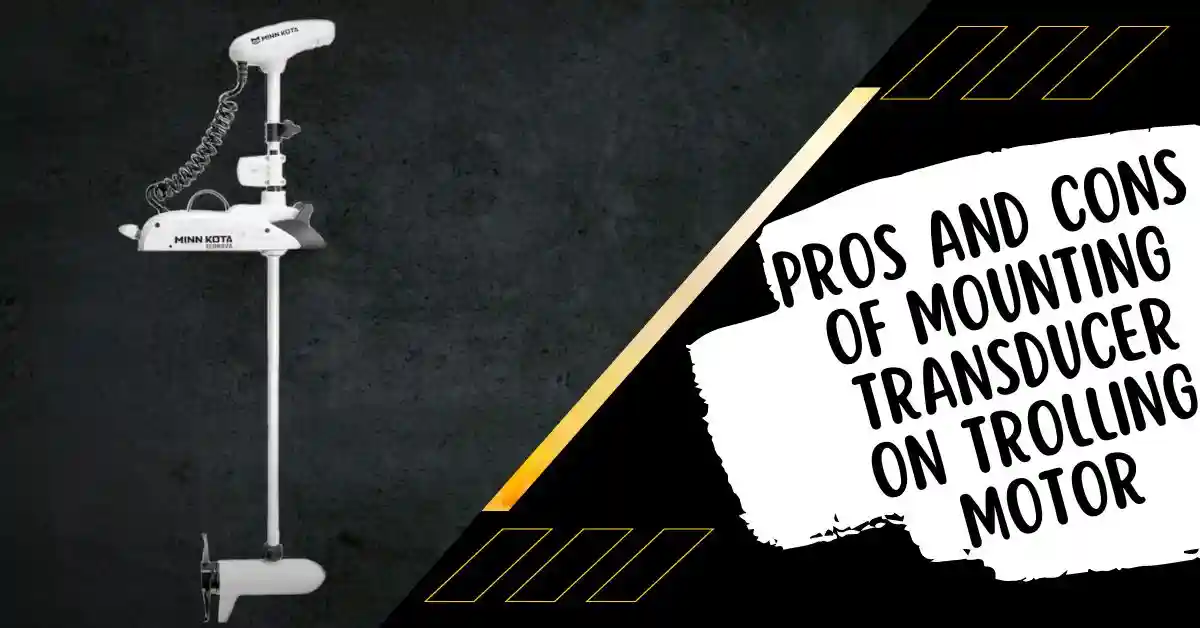A mounting transducer is definitely something a fisherman would look up to. We know how helpful it is. But to install it, we need to consider a few things. And the most important things are its pros and cons. You must consider it before the installation.
Table of Contents
ToggleWhat Is Trolling Motor?
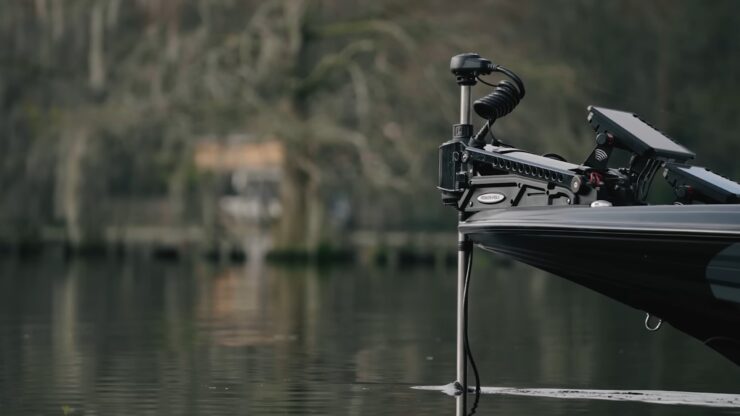
A trolling motor is an electric motor used for maneuvering and controlling a boat at low speeds, typically while fishing.
They are designed to be quiet and efficient, allowing anglers to move the boat without scaring fish away.
Trolling motors are typically mounted on the bow (front) or stern (back) of the boat and are controlled by a foot pedal or a handheld remote. They can be used in combination with the boat’s main engine or as the primary means of propulsion for smaller boats.
They come in a variety of sizes and power ratings, and the appropriate motor for a particular boat depends on the boat’s size and weight. Some trolling motors also include features such as GPS, wireless connectivity, and integration with fishfinders.
What Is Transducer?
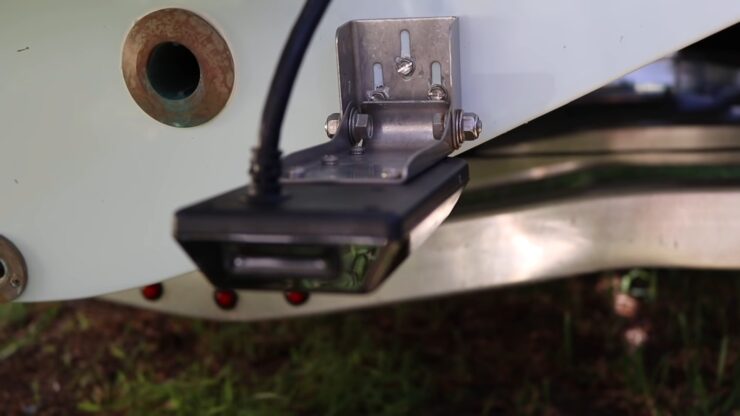
A transducer on a boat is a device that uses sonar technology to detect objects underwater and provide information to the boat’s electronics system, such as a fishfinder or depth sounder. It emits a sound wave, which travels through the water and reflects off of objects, such as the bottom of the body of water or fish.
The transducer is typically mounted on the bottom of the boat’s hull, or on a bracket specifically designed for transducer installation. It is connected to the boat’s electronics system through wiring and sends signals to the display unit, which can be used to create a visual image of the underwater environment.
Come in different types and frequencies, depending on the specific use and the depth of water being scanned. Higher frequencies are typically used for shallower water, while lower frequencies are better for deeper water.
Proper installation and positioning is important for accurate readings and optimal performance. It’s important to follow the manufacturer’s instructions for installation and to test the transducer in the water before use to ensure it is functioning correctly.
So, what are the pros and cons of mounting the transducer on trolling motor?
The first pro for this would be it covers the water column. In addition, this can also be ideal to catch objects going in random directions. Moreover, it can also transmit signal properly. However, mounting it on the trolling motor leaves high chance of getting it to hit. It also has complex management too.
This gives you a general idea about the pros and cons. But you can get every info about it in detail here.
So, read along and get started now!
Pros And Cons of Mounting The Transducer on Trolling Motor
You already know that mounting the transducer on the trolling motor can be handy. However, there are always pros and cons of things.
Just like that mounting a transducer on the trolling motor has advantages and disadvantages too. So, what are the pros and cons of mounting a transducer on the trolling motor?
Well, take a look here for this. We have got a info in detail for you with several pros and cons.
Advantages of Mounting Transducer on The Trolling Motor
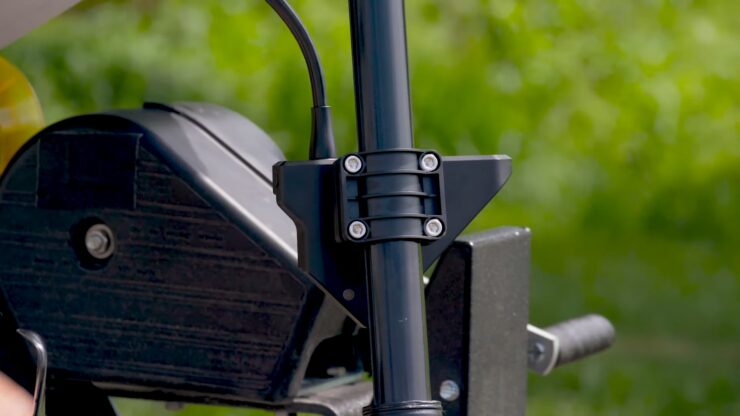
Here, we’d have a close look at the advantages of mounting transducer on the trolling motor.
Advantage 1: Transducer Covers The Water Column
If you mount or install the transducer on trolling motor, there is a common pro. And that is, you get to go along with the sight underneath.
That means you can see what is underneath all the time. You can even have a look underneath and at the surrounding while you are fishing.
As a result, you can understand if you need to move here and there. You can understand what type of fish could be seen where.
You can basically aim your prey according to your wish or requirement. Because this allows you to see and change the prey very quickly.
Advantage 2: Ideal to Catch Objects
With this, you can easily catch objects with the help of sonar. That means if you have any kind of fish around you, this helps automatically.
Basically, the transducer looks for any objects around. And if it can detect through waves, this moves to it. The sonar would start moving to the object automatically even if you fail to notice it.
And this could come in really handy. This would be helpful especially for the newbies or amateurs. But not even the professionals forget to take the privilege of it too.
Advantage 3: Good Signals
You know a pro of installing transducer on trolling motor is its signal. Yes, that is right. Installing this on the trolling motor means this is relatively at the front.
As a result, this gets signals earlier than if it was at the back. And due to this, it can also send signals quicker. Not to forget that, this enables the transducer to transmit good signa by default too.
Thus, you can expect this to send and receive good signals on the trolling motor.
Disadvantages of Mounting Transducer on The Trolling Motor
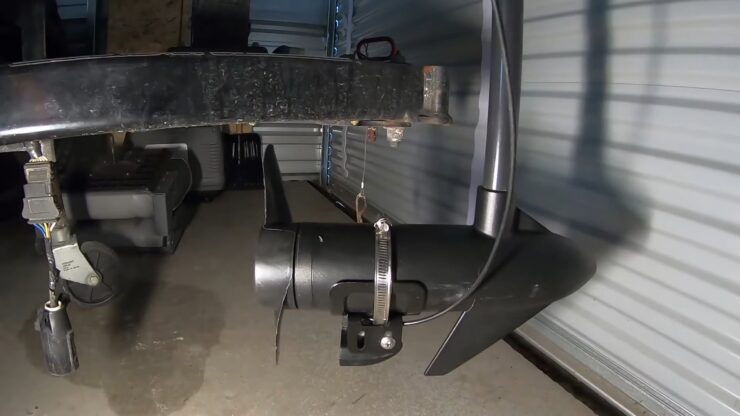
Well, you have already come up with the pros above. And do not forget that it has a few cons too. You must consider both advantages and disadvantages of it.
Then you go for the final decision whether to mount it here or somewhere else. So, now, you can have a look at the cons here in detail.
Disadvantage 1: May Get Hit Easily
You know mounting it on the trolling motor keeps it relatively at the front. As a result, this may encounter any object around it easily.
And that means it may be hit with any objects any time. So, this has a very high chance of getting hit by objects while you are sailing.
It would not only be at the risk of fish or other creatures. Because any rock or mussel beds could also hit the transducer.
And that could just damage the transducer. Thus, you need to replace it considering the cost of a transducer.
Disadvantage 2: Active Only When The Trolling Motor Is Activated
You may not be able to use the transducer everytime. Because it can only be used when the trolling motor is turned on.
When the trolling motor is deployed in the water, it works. But if you expect the trolling motor to keep stowed and the transducer work, no!
That means it would not work. Because the trolling motor is not active at the moment.
That means it has to be activated on a package. You can not go with a single one for this. And this can also lead to issues of engine mount trolling motor.
Disadvantage 3: Complex Cable Management
A common con of managing a transducer is its complex cabling. That means it is not that easy to manage the cable of a transducer.
This is because you need to manage a good length of cable for this. Because this has to be slack to go to every direction needed.
And due to the length, the cable has high risks of getting snapped. So, you would find it difficult to maintain at times.
Thus, this becomes tough especially when the water depth is significant. And this also happens mounting the outboard too high.
So, these are the pros and cons you may come across. And you can finally decide on what to do going through this.
Remember mounting the transducer on the trolling motor is actually preferable. But if you think you still need to reconsider, this would help.
Make sure you are certain and confident about what you are doing. Good luck!
FAQs
Is it really needed to install a mounting transducer?
No, it is not a must to install a mounting transducer on your boat. Because it basically depends on the user or the boat rider. If you are interested in fishing, you must get one of these. On the other hand, if you have no interest in fishing, you do not necessarily need this.
Is a mounting transducer cheap or expensive?
Well, a mounting transducer is not that cheap to be honest. It is neither that expensive if you look at its utilities. So, if you want to buy one of these, you need to spend around $65. Yes, the price may vary a bit but not that significantly. But the price isn’t that much compared to the other things.
Can I mount the transducer at different places?
Well, some people consider mounting the transducer at different places. However, it is better to install it at the lower part of the boat. And it is mainly installed there actually. Because that is when you get more signals, making it convenient for your purpose.
Where is the best place to mount a transducer on a trolling motor?
The best place to mount a transducer on a trolling motor is on the lower unit of the motor, so that the transducer is facing downward.
This allows the transducer to receive accurate readings, and can be done with a transom mount or trolling motor mount.
Some transducers come with their own dedicated mounting kits, which can make the mounting process much easier.
What tools will I need to mount a transducer on a trolling motor?
To mount a transducer on a trolling motor, you will need a transom mount or trolling motor mount, a drill, an adjustable wrench, and a screwdriver.
If you are using a dedicated mounting kit for your transducer, you may need additional tools depending on the specific kit.
Additionally, you may need a cable exit that allows the cable to be on the top side of the trolling motor.
Do I need to purchase a separate mounting bracket for my transducer?
Depending on the make and model of the trolling motor and transducer, a separate mounting bracket may be required. It’s important to check the manufacturer’s specifications to determine if a mounting bracket is needed.
How do I wire the transducer to my fishfinder or other display unit?
To wire the transducer to your fishfinder or other display unit, you will need to first connect the power cable of the transducer to the power source.
Once the power is connected, you will then need to connect the data cable of the transducer to the data input on your display unit.
Depending on the type of transducer and display unit you are using, the data cable may need to be connected to a sonar or NMEA port.
Once the cables are connected, you will then need to configure your display unit to recognize the transducer.
The Final Words
Now you know about the pros and cons of the mounting transducer on trolling motor! We believe you have all the info you need now.
But do not forget one thing. That is, you may have any confusion regarding your boat mechanism. In that case, do not proceed without clarifying the confusion. Or else, you may have unexpected consequences.
All the best!
I’m Liam Jackson, the proud owner and driving force behind KayakPaddling.net. Born somewhere in the expansive beauty of the United States, I’ve nurtured a lifelong passion for kayaking and fishing that has led me to explore the far corners of our nation’s waterways.
Related Posts:
- Heavy Duty Fishing: 11 Best Rods And Reels For Big Fish 2024
- 10 Best Saltwater Fishing Boats - Ultimate Angling Adventure
- 16 Best Kayak For Beginners 2024 - Kayaking Adventure Gear
- 12 Best Truck Bed Hitch Extenders for Kayak 2024 -…
- 12 Best Kayak GPS 2024 - Find Your Way to Adventure
- 12 Best Motorized Kayak 2024 - Start Your Aquatic Adventure!

